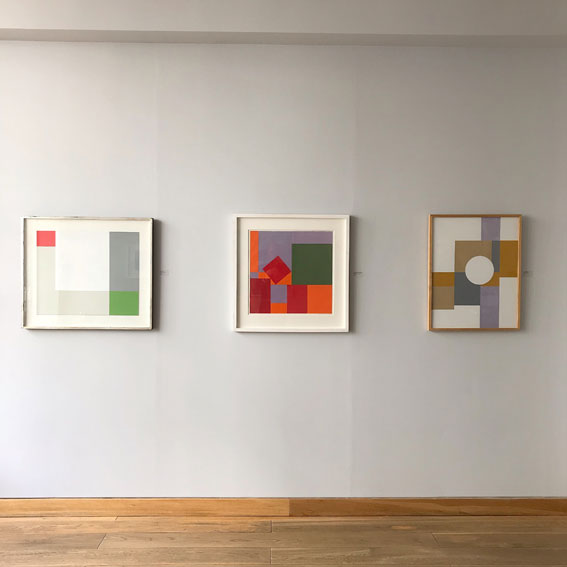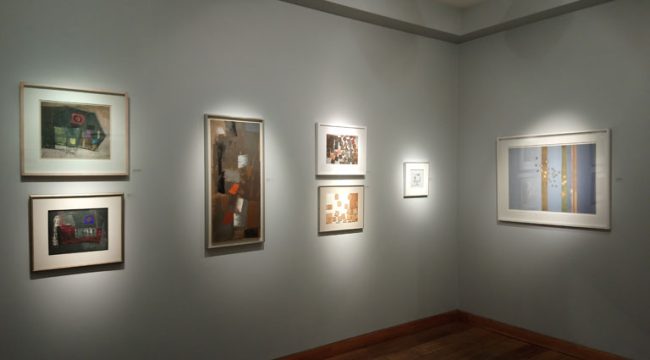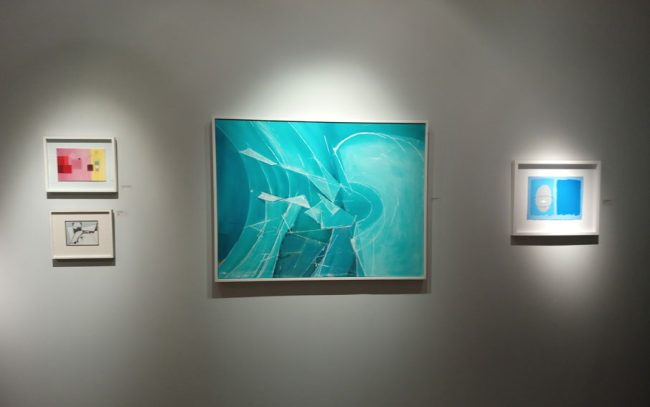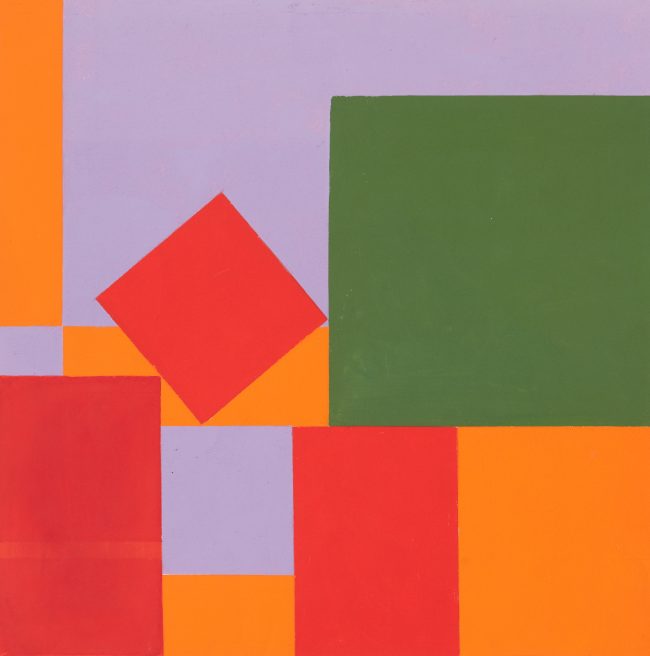Wilhelmina Barns-Graham in Shared History

From left to right: John Wells, WBG, George Dannatt
Shared History – The Art of Wilhelmina Barns-Graham, George Dannatt, John Wells presents the work of Willie and her close friend John Wells, and the artist/collector George Dannatt, all who, at different times in their work, applied a strict geometry to their painting. Willie and Wells were both founder members of the Crypt Group in 1947 and of the Penwith Society of Artists in 1949 while Dannatt’s relationship with Wells began in 1963. Both of them exhibited together regularly, particularly at the Penwith Society. Moreover, Dannatt was as much a collector as an artist, purchasing works by both Willie and Wells.
The exhibition focuses on the comparative neglect of these artists within the story of St Ives artists and sets about exploring both their place in that history and why their achievements are not more widely recognised. Such a re-assessment is long overdue, and Waterhouse & Dodd’s Jamie Anderson has written a thoughtful catalogue introduction that points out that Willie was not the only artist who for great periods has been unjustly airbrushed from the St Ives narrative. The reason for this is partly to do with the artists working against prevailing trends as much as the critical ‘put downs’ by some of their peers – attitudes that have been hard to shake off until quite recent times.
In his essay Anderson writes, “As the influence of the American Abstract Expressionist artists took hold, many of the ‘middle generation’ of St Ives artists developed more gestural styles. Lanyon, once heir apparent to Nicholson, found that the dynamic mark making of the American pioneers gave him a more appropriate pictorial language to convey his experience of the environment. Similarly, Patrick Heron, whose role in the history of St Ives art is one of an artist and ‘in house’ critic, increased the scale of his paintings as well the colour saturation. The British interpretation of abstract expressionism became the prevailing aesthetic in St Ives after Nicholson and Gabo had left the town (in 1955 and 1948 respectively). However, Wells and Barns-Graham, almost in isolation, furrowed a different path. Their works are invariably on a smaller scale, more obviously linked with European constructivism and they convey a very different sense of the natural environment – an experience of the structure rather than the atmosphere of the landscape.” He goes on the say; “ The rise of the Pop generation and enduring influence of the Abstract Expressionists made both artists appear parochial and reactionary, yet in a sense the opposite was true. The application of geometry in their painting (more so with Wells than Barns-Graham) was progressive and had strong echoes of the constructivist movement in mainland Europe. Although concrete art has a long tradition in Europe, it is widely misunderstood in the UK.”
Anderson continues to highlight further points to underscore the right of their work to be properly reappraised. The full article definitely deserves a close read, the catalogue available from the gallery. Willie is represented by twelve paintings dating from between 1962 and 1987. Their shared commonality with the paintings of Wells and Dannatt is both notable and surprising in unexpected ways.
Catalogue available from the gallery – recommended!
Shared History: The art of Wilhelmina Barns-Graham, George Dannatt , John Wells
Waterhouse & Dodd, 47 Albemarle Street, London W1S 4JW
Exhibition runs 3 to 26 October.



Untitled, 1969, Gouache on paper, BGT2061
